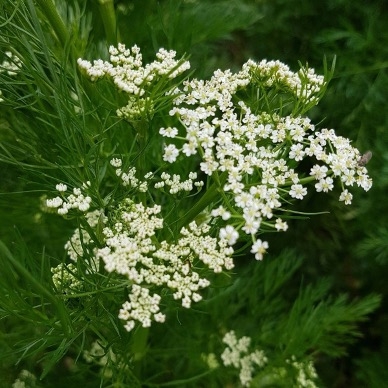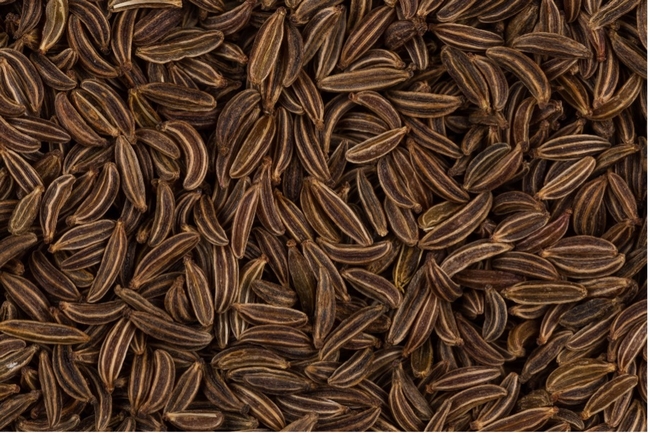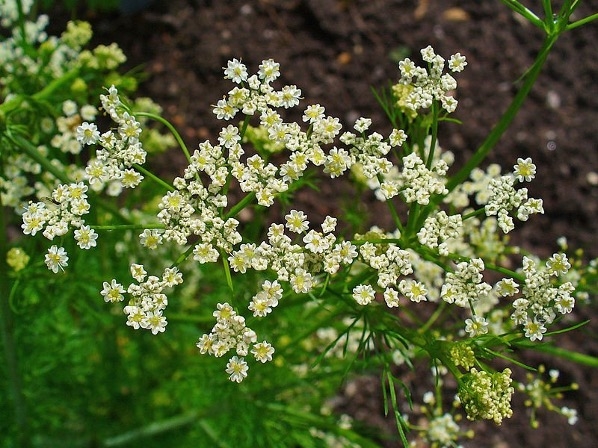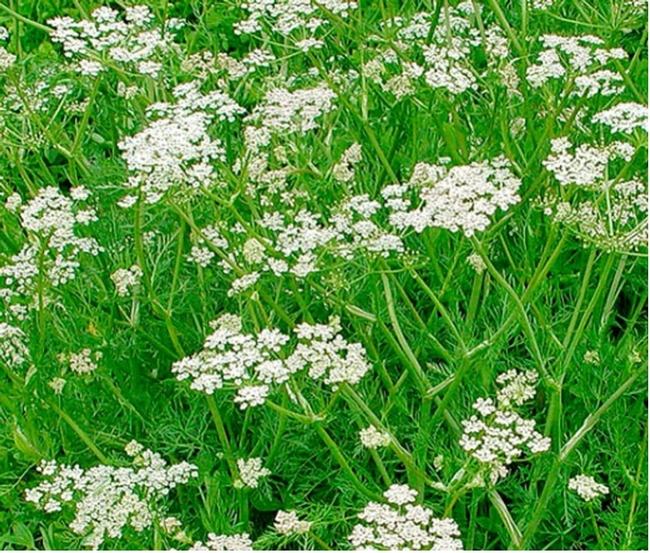Herb Study – Caraway
Over the years, my wife and I have converted our home's yard from 1100 ft2 of lawn to a native, edible, and herbal wonderland. We continue to add unique and fragrant herbs that enhance the overall beauty and bounty of our garden. Caraway is one that we will add promptly and make sure we can grow in any future garden we may have. We even put caraway in the San Joaquin County Agriculture Center's demo garden just for our Master Gardener volunteers and the public to enjoy.
One of the very first things I found when researching this herb is that it was used in many “love potions” during the medieval period—the time of Merlin, King Arthur, and all those folks who had extremely tough lives and needed all the help they could muster to persuade a “fool to fall in love.” (Cue the song “Love Potion #9.”) Even funnier to me was noticing that the first recipe I found for caraway cookies calls for King Arthur brand Unbleached All-Purpose Flour. You just can't make this stuff up!
The use of caraway in culinary and medicinal applications dates to ancient times in Africa, Asia, and Europe. It was a staple crop in Biblical times, with many references to its cultivation and threshing. People ingested caraway seed as a digestive aid and also used it as a breath freshener.
Caraway is a biennial plant of the family Apiaceae, or Umbelliferae, which also includes celery, carrot, parsnips, fennel, parsley, and other fragrant flowering plants. Please note there are plants that exhibit similar “umbel” flowers that are actually poisonous (hemlock comes to mind). Do not keep poisonous plants in your caraway bed! (An umbel is an inflorescence that consists of multiple short flower stalks called pedicels that spread from a common point, like umbrella ribs.)
Carum carvi (shown in all figures) is the only caraway under cultivation. It grows in USDA Hardiness Zones 4 to 10. In the temperate regions within these zones, which experience four seasons, you should sow this biennial in early spring. Those of us with mild winters may grow caraway as an annual, planting seed in the winter. Caraway carvi is a self-fertile herb, so it is necessary to have just one plant to produce a fruit crop. Bees disperse pollen, attracted to the nectar-rich blossoms.
Caraway is usually grown from seed, giving rise to an herbaceous plant with thin stalks and fine leaves in its first year, only to die back during the winter weather and emerge in the spring of its second year, the foliage becoming bushier. The plant tops out about two feet high, producing an umbel arrangement of tiny pink or white florets that make up a flat-topped flower head. As the season ends, the florets wither and give way to the fruit we refer to as seed.
In appearance, caraway is similar to dill, cumin, fennel, and anise, although no data or research indicate a true familial relationship. While caraway is also known by the names Persian Cumin and Meridian Fennel, the name caraway appears to be derived from the Arabic word karawya (alternate spelling karawiya). Historically, the people of Morocco cultivated caraway.
The umbel flowers of caraway produce an aromatic fruit that splits in half as it ripens into seeds. These seeds are a spice. The flavor is distinctly pungent. When you bite into a caraway seed, the flavor jumps up and reaches the whole of your taste buds, with anise and licorice undertones. Caraway is well recognized as the flavor of classic seeded rye bread. And while its fruit is the main attraction, the similarly fragrant leaves as well as the roots are edible. Think carrot tops or parsley leaves and parsnips.
Beware, if you do not harvest the caraway fruit, the seed will fall and remain dormant until it germinates (which it will) the following spring. This invasive self-sowing may prove overwhelming to an unseasoned gardener.
When you shop for seed to sow, understand that names can be easily confused. Here are two unrelated species with similar names:
- Caraway thyme, Thymus herba-barona. This is a low-profile herb that's often used as a ground cover. It is in the mint, or Lamiaceae family, and its leaves taste like caraway.
- Black caraway, Nigella sativa, is in the Ranunculaceae family, which includes buttercups, clematis, and columbine. Its seed has a bitter, peppery taste.
Have fun with caraway!
Reference
Nan Schiller, How to Plant and Grow Caraway



